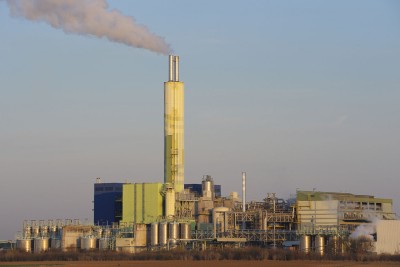Since their introduction in American grocery stores 30 years ago, plastic carryout bags have become both wildly popular and widely despised.
We tend to like them when they let us get all our stuff from the checkout counter to the car and into the house in one trip. After that, they’re a nuisance in the house — where they accumulate with amazing speed — and a combination eyesore and environmental problem outside, where they take flight and add unsightliness wherever they land.
Oh, sure. Many of us have reusable cloth bags that we bought with the best intentions of eliminating plastic sacks from our lives. We think about those bags every time we’re in the checkout line without them. And we collect the plastic bags at home intending to do something with them, like finding one of the few recycling depositories for them. More often than not, though, they go in the trash.
A bill passed by the Illinois Senate and under consideration in the House would establish a statewide system for recycling those bags (and other plastic wrapping film) and would require the manufacturers of the bags to underwrite it. The tradeoff is that municipalities except Chicago lose the right to ban or impose taxes on plastic bags under the bill.
Looking at this from the angle of practicality, we see this as a fair trade and a smart way to turn a nuisance into a benefit.
Under the bill, manufacturers of plastic bags would be required by 2014 to have a collection site in 90 percent of Illinois counties and show that at least 75 percent of the population lives within 10 miles of a collection site. Manufacturers of bags would have to register with the Illinois Environmental Protection Agency at a cost of $500 a year and retailers would not be allowed to use plastic bags from an unregistered manufacturer.
We acknowledge up front that the best solution to the plastic bag problem is for consumers to use reusable bags. Many already do, and many retailers have joined the effort. There’s momentum behind the cloth-bag movement and we expect it to continue.
Some American cities have banned plastic bags entirely, or imposed per-bag taxes on them to discourage their use. But we sense no appetite (and perhaps no need) for imposition of outright bans in Illinois municipalities. Likewise, we doubt any municipality is eager to impose a tax that would affect so many consumers and so many transactions. Exchanging the ability to ban or tax for a workable, efficient recycling system hardly seems like an egregious infringement on local autonomy.
This bill is backed by groups that represent retail merchants, who use the bags, and the manufacturers who make them. Though it would impose additional regulation on them, they support the bill because it would establish a uniform system throughout the state and would prevent the emergence of a patchwork of bans and fees in municipalities and counties statewide.
Our real hope for this bill is that it boosts awareness of and support for plastic bag and wrap recycling to the point that those items become part of curbside recycling programs (assuming users learn to secure the bags in their bins). Making this part of our weekly recycling routine will be an important step in keeping bags out of both our trees and our landfills.



 A. Dearest Michael,
A. Dearest Michael,



 Photo courtesy National Film Board of Canada Photo:
Photo courtesy National Film Board of Canada Photo:  Stock Photo
Stock Photo
 Stock Photo
Stock Photo